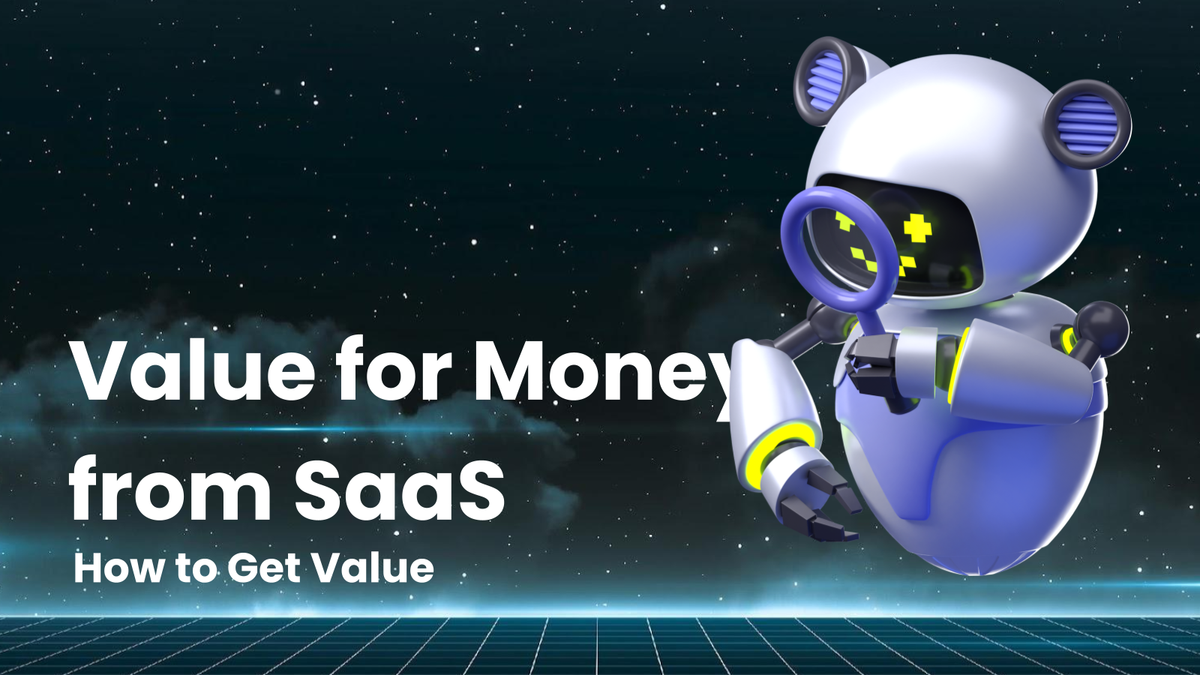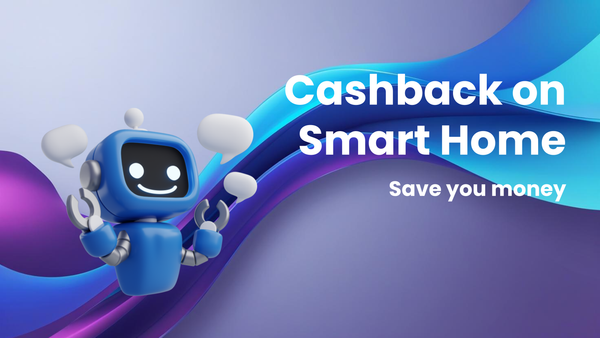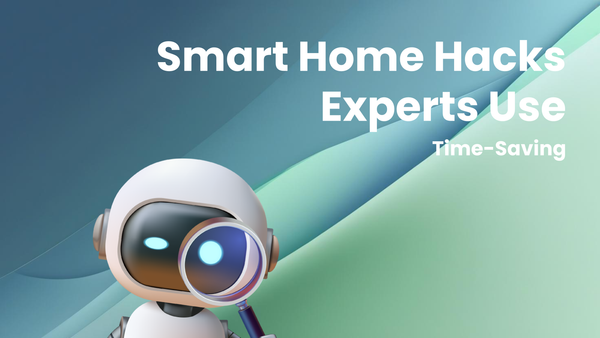How to Get Value for Money from SaaS

How to Get Value for Money from SaaS: A Comprehensive Guide
Software as a Service (SaaS) has revolutionized the way businesses operate. Offering a flexible, scalable, and often more affordable alternative to traditional on-premise software, SaaS solutions have become indispensable for organizations of all sizes. However, simply subscribing to a SaaS platform doesn't guarantee value for money. To truly maximize your return on investment (ROI) in SaaS, you need a strategic approach encompassing careful selection, effective utilization, and continuous optimization.
This comprehensive guide delves into the key strategies you can employ to extract maximum value from your SaaS investments.
I. Understanding the True Cost of SaaS
Before diving into optimization strategies, it's crucial to understand the true cost of your SaaS subscriptions. This extends beyond the monthly or annual subscription fee and encompasses several often-overlooked factors.
- Subscription Fees: This is the most obvious cost, but it's important to analyze the different pricing tiers and features offered. Are you paying for features you don't need? Are you on the most cost-effective plan based on your usage?
- Implementation Costs: Some SaaS solutions require significant setup and configuration. Consider the time and resources required to integrate the software with your existing systems, train your employees, and migrate data.
- Integration Costs: The ability to seamlessly integrate with other applications is a crucial benefit of SaaS. However, complex integrations can be costly and time-consuming. Factor in potential API call limits and the need for middleware or custom development.
- Training Costs: Employees need to be properly trained to use the software effectively. Account for the cost of training materials, workshops, and ongoing support.
- Support Costs: Many SaaS vendors offer different levels of support, ranging from basic email support to dedicated account managers. Evaluate your support needs and factor in the associated costs.
- Data Migration Costs: Moving data to and from your SaaS platform can incur costs, especially for large datasets. Consider the potential for data loss and the resources required to ensure data integrity during migration.
- Switching Costs: If you decide to switch to a different SaaS provider, you may incur costs related to data export, system reconfiguration, and employee retraining. Vendor lock-in is a real concern, so carefully consider the ease of data portability.
- Hidden Costs: These can include costs associated with exceeding usage limits, requiring additional storage, or needing add-on features. Read the fine print of your SaaS agreement to identify potential hidden costs.
- Opportunity Costs: Consider the time and resources spent managing the SaaS platform. Could these resources be better utilized elsewhere? Evaluating the opportunity cost helps determine the overall value of your SaaS investment.
By understanding all these cost factors, you can make more informed decisions about which SaaS solutions to choose and how to optimize their usage.
II. Strategic SaaS Selection: Choosing the Right Tools
The foundation of getting value for money from SaaS lies in choosing the right tools for your specific needs. A rushed or ill-informed decision can lead to wasted resources and frustration.
- Define Your Needs and Objectives: Before you even start researching SaaS solutions, clearly define your business needs and objectives. What problems are you trying to solve? What specific functionalities do you require? What are your key performance indicators (KPIs)?
- Identify Stakeholders and Gather Requirements: Involve all relevant stakeholders in the needs assessment process. This ensures that the chosen solution meets the requirements of all departments and users.
- Research and Evaluate Potential Solutions: Once you have a clear understanding of your needs, research and evaluate potential SaaS solutions. Look for vendors that have a proven track record, positive customer reviews, and a strong understanding of your industry.
- Compare Features and Pricing: Carefully compare the features and pricing of different SaaS solutions. Don't just focus on the monthly subscription fee; consider the total cost of ownership, including implementation, training, and support.
- Request Demos and Trials: Take advantage of free trials and demos to test out the software and see if it meets your needs. This allows you to get hands-on experience with the platform and evaluate its usability and performance.
- Check Integrations: Ensure that the SaaS solution integrates seamlessly with your existing systems and workflows. This is crucial for maximizing efficiency and avoiding data silos.
- Assess Security and Compliance: Security is paramount when dealing with sensitive data. Make sure that the SaaS vendor has robust security measures in place and complies with relevant industry regulations.
- Evaluate Scalability: Choose a SaaS solution that can scale with your business. As your needs grow, you should be able to easily upgrade your subscription and add new users.
- Read the Fine Print: Before signing a contract, carefully review the terms of service, service level agreements (SLAs), and data privacy policies. Pay attention to issues such as data ownership, data security, and termination clauses.
- Negotiate Pricing and Terms: Don't be afraid to negotiate pricing and terms with the SaaS vendor. Many vendors are willing to offer discounts or customized pricing plans, especially for long-term contracts.
III. Effective SaaS Utilization: Maximizing the Benefits
Once you've chosen the right SaaS solutions, it's important to utilize them effectively to maximize their benefits. This involves not just using the software, but integrating it into your business processes and ensuring that your employees are properly trained.
- Develop a Comprehensive Implementation Plan: A well-defined implementation plan is crucial for ensuring a smooth and successful rollout. The plan should include timelines, milestones, and assigned responsibilities.
- Provide Adequate Training: Proper training is essential for ensuring that your employees can effectively use the SaaS solution. Provide comprehensive training materials, workshops, and ongoing support.
- Integrate SaaS into Existing Workflows: Integrate the SaaS solution into your existing workflows to streamline processes and improve efficiency. Avoid creating isolated silos of information.
- Set Clear Goals and KPIs: Define clear goals and KPIs for each SaaS solution. This will allow you to track your progress and measure the ROI of your investment.
- Monitor Usage and Performance: Regularly monitor usage and performance to identify areas for improvement. Are your employees using the software effectively? Are you getting the most out of its features?
- Encourage Adoption and Engagement: Encourage employees to adopt and engage with the SaaS solution. Highlight the benefits of using the software and provide incentives for active participation.
- Leverage Automation Features: Many SaaS solutions offer automation features that can streamline tasks and save time. Take advantage of these features to automate repetitive processes and free up your employees to focus on more strategic activities.
- Customize and Configure the Software: Customize and configure the software to meet your specific needs and requirements. Many SaaS solutions offer a high degree of customization, allowing you to tailor the platform to your unique workflows.
- Establish a Feedback Loop: Establish a feedback loop with your employees to gather feedback on their experiences with the SaaS solution. Use this feedback to identify areas for improvement and to ensure that the software is meeting their needs.
- Promote Collaboration and Knowledge Sharing: Encourage collaboration and knowledge sharing among employees using the SaaS solution. This can help to foster a culture of learning and innovation.
IV. Continuous Optimization: Refining Your SaaS Strategy
Getting value for money from SaaS is not a one-time effort; it's an ongoing process of continuous optimization. You need to regularly review your SaaS strategy, identify areas for improvement, and make adjustments as needed.
- Regularly Review Your SaaS Subscriptions: Regularly review your SaaS subscriptions to ensure that you are still getting value for money. Are you paying for features you don't need? Are there alternative solutions that offer better value?
- Track Key Metrics and KPIs: Track key metrics and KPIs to measure the ROI of your SaaS investments. This will help you to identify areas where you can improve efficiency and reduce costs.
- Analyze Usage Data: Analyze usage data to understand how your employees are using the SaaS solutions. This can help you to identify training gaps and opportunities for optimization.
- Solicit Feedback from Users: Regularly solicit feedback from users to understand their experiences with the SaaS solutions. This can help you to identify areas for improvement and to ensure that the software is meeting their needs.
- Stay Up-to-Date with New Features and Updates: Stay up-to-date with new features and updates to the SaaS solutions. Many vendors regularly release new features and improvements that can enhance your productivity and efficiency.
- Explore Integration Opportunities: Continuously explore new integration opportunities to streamline workflows and improve data flow. Integrating your SaaS solutions can significantly enhance their value.
- Negotiate Renewal Terms: When it's time to renew your SaaS subscriptions, negotiate the renewal terms with the vendor. You may be able to get a better price or additional features by negotiating.
- Consider Alternative Solutions: Periodically consider alternative SaaS solutions to ensure that you are still using the best tools for your needs. The SaaS market is constantly evolving, and new solutions are being introduced all the time.
- Optimize Your Subscription Tiers: Adjust your subscription tiers based on your actual usage. If you're consistently underutilizing your current tier, you might be able to save money by downgrading. Conversely, if you're constantly exceeding your limits, upgrading might be more cost-effective in the long run.
- Automate Processes to Reduce Manual Effort: Leverage automation capabilities within your SaaS tools to reduce manual effort and improve efficiency. This can free up your employees to focus on more strategic tasks.
V. Specific Strategies for Cost Reduction
Beyond the broader strategic approaches, here are some specific tactics you can employ to directly reduce your SaaS spending:
- Consolidate SaaS Tools: Identify overlapping functionalities across your various SaaS subscriptions. Consolidating these tools into a single, more comprehensive platform can eliminate redundant costs and streamline your workflows.
- Eliminate Unused Licenses: Regularly audit your user accounts and remove licenses for employees who no longer need access to the software.
- Negotiate Volume Discounts: If you have a large number of users, negotiate volume discounts with your SaaS vendors.
- Pay Annually Instead of Monthly: Many SaaS vendors offer discounts for annual subscriptions. If you're confident that you'll be using the software for the long term, consider paying annually to save money.
- Take Advantage of Free Trials and Demos: Before committing to a paid subscription, take advantage of free trials and demos to thoroughly evaluate the software and ensure that it meets your needs.
- Use Open Source Alternatives: In some cases, you may be able to find open-source alternatives to commercial SaaS solutions. These alternatives can be a cost-effective option, but they may require more technical expertise to implement and maintain.
- Consider "Usage-Based" Pricing Models: Explore SaaS solutions that offer usage-based pricing models. This allows you to pay only for what you actually use, which can be a cost-effective option for businesses with fluctuating usage patterns.
- Look for Bundled Deals: Some SaaS vendors offer bundled deals that include multiple products or services at a discounted price.
- Implement a SaaS Management Platform: Consider using a SaaS management platform to track and manage your SaaS subscriptions. These platforms can help you to identify unused licenses, optimize usage, and negotiate better pricing.
- Centralize Purchasing: Establish a centralized process for purchasing SaaS subscriptions. This will give you greater visibility into your SaaS spending and allow you to negotiate better deals.
Conclusion
Getting value for money from SaaS requires a strategic approach that encompasses careful selection, effective utilization, and continuous optimization. By understanding the true cost of SaaS, choosing the right tools, maximizing their benefits, and continuously refining your strategy, you can unlock the full potential of SaaS and drive significant business value. Remember that the key is to be proactive, data-driven, and focused on aligning your SaaS investments with your overall business objectives. By implementing the strategies outlined in this guide, you can ensure that your SaaS investments are delivering a strong return on investment and contributing to your organization's success.




